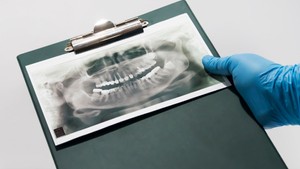Blog
Ensuring your child’s oral health is a top priority, and one frequent concern among parents is the safety of dental X-rays.
Ensuring your child’s oral health is a top priority, and one frequent concern among parents is the safety of dental X-rays. Questions often arise regarding the risks associated with radiation exposure from these imaging techniques. In this article, we will thoroughly examine dental X-rays, discussing their purpose, safety protocols, and the circumstances under which they are necessary. By dispelling common myths and presenting the facts, we aim to help you make informed decisions about your child’s dental care. So, are dental X-rays safe? Join us as we explore the world of dental X-rays and empower you with the knowledge to confidently manage your child’s dental health.
Overview of Dental X-Rays
Dental X-rays are crucial diagnostic tools used by dentists to evaluate the condition of teeth, gums, and the surrounding bone structures. These images reveal areas that cannot be seen during a standard dental examination, allowing for the early detection of issues such as cavities, tooth decay, and other oral health concerns.
There are several common types of dental X-rays utilized in practice:
- Bitewing X-rays: Capture the upper and lower teeth in one area of the mouth.
- Periapical X-rays: Focus on individual teeth and the surrounding bone.
- Panoramic X-rays: Provide a broad view of the entire mouth, including the jaw and teeth.
Each type serves a specific purpose, tailored to the patient’s needs. The benefits of dental X-rays in diagnosis are significant. They enable dentists to identify problems at early stages, often before symptoms arise. This proactive approach can lead to less invasive treatment options and better outcomes for patients. Additionally, X-rays help monitor the development of children’s teeth, ensuring they are growing properly and aiding in the planning of any necessary orthodontic treatments. At Leap Kids Dental, we prioritize your child’s safety and comfort, ensuring that all procedures, including X-rays, are performed with the utmost care.
Radiation Exposure and Safety
A common concern among parents is the safety of radiation exposure during dental X-rays. It’s important to understand that the levels of radiation used in dental X-rays are extremely low. The radiation exposure from a single dental X-ray is comparable to the amount of natural background radiation an individual receives from their environment over just a few days.
To provide context, the radiation dose from a single dental X-ray is about 0.005 to 0.01 millisieverts (mSv), whereas the average person is exposed to approximately 3 mSv of natural background radiation per year. This means that the radiation from dental X-rays is minimal in comparison to daily environmental exposure.
At Leap Kids Dental, we prioritize the safety of our young patients. We employ various safety measures during X-ray procedures to minimize exposure, including using lead aprons to shield the body and ensuring that X-ray equipment is regularly maintained and calibrated for optimal performance. Additionally, we utilize digital X-ray technology, which requires even less radiation than traditional film X-rays while providing high-quality images. Parents can feel assured that the benefits of dental X-rays in diagnosing and preventing dental issues far outweigh the minimal risks involved. In the field of radiology dentistry, ensuring that dental x-rays are safe is a top priority.
Who Needs Dental X-Rays?
Dental X-rays are not always necessary for every patient at every visit. The need for X-rays depends on various factors, including the patient’s age, dental health, and history of dental issues. Here are some scenarios where dental X-rays are particularly useful:
- New Patients: Dentists often recommend X-rays for new patients to establish a baseline record of their oral health. This helps in identifying any existing issues and planning future treatments.
- Children: As children grow, their teeth and jaw develop. X-rays help monitor this development, ensuring that their teeth are coming in correctly and identifying any potential orthodontic needs early on.
- Adults: For adults, X-rays are useful in detecting cavities, gum disease, and other issues that may not be visible during a routine examination.
- Follow-Up: Patients with a history of dental issues may require regular X-rays to monitor their condition and ensure that any treatments are effective.
The frequency of X-ray recommendations varies based on individual needs. For example, children and teens may need X-rays more frequently than adults due to their developing teeth and jaws. Your dentist will advise on the appropriate schedule for X-rays based on your child’s specific needs and dental history. Understanding the question “are dental X-rays safe” is crucial in making informed decisions about radiology dentistry.
Alternatives to Traditional X-Rays
Advancements in technology have provided several alternatives to traditional X-rays, ensuring that patients receive the best care while prioritizing safety. One notable alternative is digital X-rays. These imaging methods use electronic sensors instead of traditional film, significantly reducing radiation exposure—often by up to 80%. The images can be viewed instantly, enabling quicker diagnosis and treatment planning, and they are also environmentally friendly, as they eliminate the need for chemical processing.
Another innovative technology is cone beam computed tomography (CBCT), which offers 3D imaging capabilities. CBCT provides detailed views of the teeth, gums, and surrounding structures, making it particularly useful for complex cases and allowing dentists to plan procedures with greater precision.
In some cases, considering alternatives to X-rays may be advisable. For patients who are particularly anxious about radiation exposure or for children who may require less frequent imaging, dentists may opt for clinical evaluations, visual inspections, and other non-radiative imaging techniques. It’s essential to consult with your dental professional to determine the most suitable imaging method for your specific needs, ensuring you receive the best care while addressing any safety concerns.
Addressing whether X-rays are safe helps alleviate concerns about radiology dentistry and encourages informed decisions about dental care.
Addressing Common Concerns
Many parents express concerns about the safety of dental X-rays due to prevalent myths and misconceptions. One common myth is that dental X-rays are dangerous and expose children to harmful levels of radiation. In reality, modern dental X-rays use minimal radiation, often much lower than what one would encounter in everyday life. Furthermore, advancements in technology have made X-ray machines more efficient, allowing for quicker exposures and enhanced safety measures.
For patients with specific health conditions, such as pregnancy or certain medical conditions, dental professionals follow strict guidelines to ensure safety. It’s crucial to inform your dentist about any health concerns so they can take the necessary precautions, such as using protective lead aprons or postponing X-rays if needed.
Anxiety around dental procedures, including X-rays, is common among children. To ease these worries, it’s helpful to explain the process in a simple, reassuring manner. Encourage your child to ask questions and ensure they understand that X-rays help keep their smiles healthy. Many dental practices, including Leap Kids Dental, are equipped with child-friendly environments and staff trained to make the experience as comfortable as possible, helping to alleviate fears and build positive associations with dental visits.
Understanding whether dental X-rays safe and addressing concerns is vital for parents, ensuring they feel confident about their child’s dental care. Additionally, viewing a tooth decay X-ray or an X-ray of teeth can help parents see the importance of these diagnostic tools.
Conclusion: Making Informed Decisions
In summary, dental X-rays are a safe and essential tool for maintaining oral health. They allow dental professionals to detect issues that may not be visible during a regular examination, such as cavities, infections, or developing dental problems. The small amount of radiation exposure from modern X-ray technology is considered minimal and well within safety guidelines, making the benefits of these diagnostic tools far outweigh the risks.
It is crucial for patients and parents to feel comfortable discussing any concerns about dental X-rays with their dental professionals. Open communication helps ensure that all questions are answered, and any apprehensions can be alleviated. Dental professionals are trained to explain the necessity and safety of X-rays, guiding you towards making informed decisions regarding your child’s dental care.
Regular dental check-ups, which often include X-rays, play a vital role in preventing dental issues and maintaining overall oral health. By scheduling consistent visits to your child’s dentist, you not only ensure that their teeth are healthy but also that any potential problems are caught early. At Leap Kids Dental, we prioritize your child’s safety and comfort, ensuring a positive experience at every visit. Remember, informed decisions lead to healthier smiles!
Understanding if X-rays at the dentist are safe and ensuring that dental X-rays are safe is crucial in maintaining confidence in radiology dentistry. By viewing a tooth decay X-ray or an X-ray of teeth, parents can better understand the importance of these diagnostic tools.





